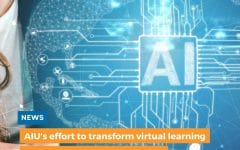The Complete Guide To Distance Learning Program: What It Is, And How To Get Started
May 13, 2024 2024-05-14 3:00The Complete Guide To Distance Learning Program: What It Is, And How To Get Started

The Complete Guide To Distance Learning Program: What It Is, And How To Get Started
In recent years, distance learning has emerged as a powerful educational tool, offering flexibility and accessibility to learners worldwide. According to the National Center for Education Statistics (NCES), around 7.5 million U.S. students depend upon online classes for higher education. In fact, the Covid-19 pandemic has played a big role in accelerating the popularity of remote learning from 2020. It has reshaped the modern learning system especially in higher education offering students flexibility in learning. It is quite an evolution to step out of a traditional classroom setting and enter the digital world of learning where nothing can stop a curious mind from gaining knowledge.
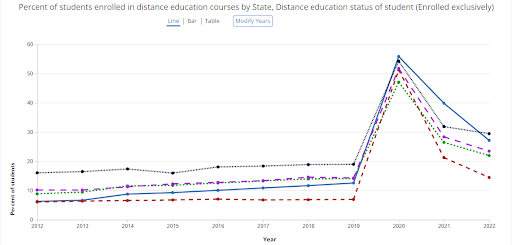
Source: U.S. Department of Education, National Center for Education Statistics
Definition and Significance of Distance Learning
What is Distance Learning Program?
Distance learning, also known as online learning or e-learning, encompasses various educational formats that allow students to learn remotely, often utilizing digital technologies and the same internet connection. This mode of education transcends geographical boundaries, enabling individuals to access quality education regardless of location or time constraints.
The significance of distance learning lies in its ability to democratize education, making it accessible to a diverse range of learners, including working professionals, individuals with disabilities, and those residing in remote areas with limited access to traditional educational institutions. Moreover, distance learning offers flexibility, allowing students to balance their studies with other commitments, such as work or family responsibilities.
For Atlantic international University our model of Academic Freedom and self determination where the student is empowered to chart his/her own unique path have led to a customized Learning Management System (LMS) and Virtual Campus. At the core of it is freedom of choice bringing together daily live classes, weekly optional assignments, AI assisted course creation, Mini-Courses to facilitate microlearning, Symposiums and Webinars for students and staff to exchange ideas and robust library resources such as 260,000 books accessible online. As a community component Gamification of the learning process such as earning badges, unlocking gifts and AIULink which is AIU’s social media platform/networking via AIULink create the opportunity for online students to join together and collaborate.
Overview of the Article’s Focus
This article provides a comprehensive guide to everything educators and learners need to know for successful distance learning programs. We will explore critical components that contribute to the effectiveness of distance learning, including:
- Technological Infrastructure: This section provides an overview of the essential technological tools and platforms required for seamless online learning experiences, such as learning management systems (LMS), video conferencing software, and collaboration tools.
- Pedagogical Strategies: Insights into effective teaching methodologies tailored for distance learning environments, including asynchronous and synchronous learning approaches, interactive multimedia content, and assessment strategies that promote engagement and learning outcomes.
- Student Support Services: This section discusses the importance of robust student support services in distance learning programs, including online tutoring, academic advising, and technical assistance, to enhance student success and retention rates.
- Accessibility and Inclusivity: Consider accessibility standards and practices to ensure that distance learning programs accommodate diverse learners, including those with disabilities, linguistic differences, or varying learning preferences.
- Best Practices for Engagement and Motivation: Strategies for fostering active participation, collaboration, and intrinsic motivation among distance learners, such as gamification, peer interaction, and personalized learning experiences.
- Evaluation and Continuous Improvement: Guidance on monitoring and evaluating the effectiveness of distance learning programs through feedback mechanisms, data analytics, and iterative improvements to enhance overall quality and learner satisfaction.
What Are the Infrastructure Requirements for Successful Distance Learning Programs?
Access to Reliable Internet Connectivity
- Reliable internet connectivity is paramount for seamless participation in online education, remote learning classes online, and virtual classrooms.
- Internet access enables students to engage in e-learning initiatives, access Internet-based education resources, take online classes and receive remote instruction.
- It facilitates web-based distance learning courses, through digital education platforms, ensuring uninterrupted access to distance education courses and online learning opportunities.
Availability of Suitable Devices (Computers, Tablets, etc.)
- Access to suitable devices such as computers, tablets, or smartphones is essential for accessing online education resources and participating in remote learning activities.
- These devices allow students to connect to their virtual classroom, engage in e-learning initiatives, and access digital education platforms.
- Ensuring the availability of devices enables students to fully leverage distance education courses and take advantage of online learning opportunities from anywhere.
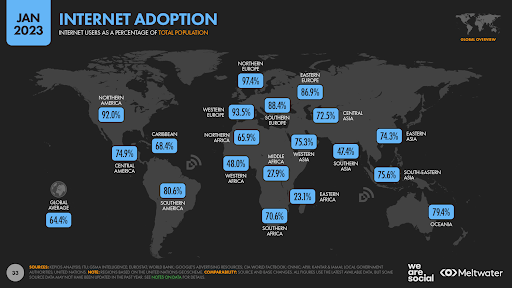
Necessary Software and Applications for Online Learning
- The availability of necessary software and applications is crucial for facilitating compelling online learning experiences.
- These software tools enable students to interact with online courses and materials, participate in virtual classrooms, and engage in collaborative activities.
- Essential software and applications may include learning management systems (LMS), video conferencing tools, interactive multimedia resources, and productivity suites tailored for digital education platforms. Some examples are: Moodle, Blackboard, AtNova or self-development such as .NET used by AIU.
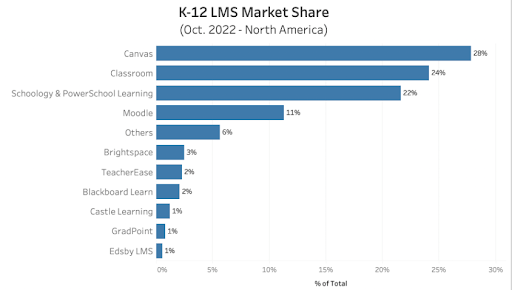
By addressing these infrastructure requirements, educational institutions can create an online environment more conducive to successful distance learning programs, ensuring students can access the tools and resources necessary for engaging and impactful online education experiences.
Academic Preparedness for Successful Distance Learning Programs
- Understanding the Expectations of Distance Learning Courses:
In transitioning to online education, whether through remote learning, virtual classrooms, or e-learning initiatives, students must grasp the unique expectations of distance learning courses. Unlike traditional classroom settings, where face-to-face interactions may dominate, online education relies heavily on web-based and digital learning platforms.
Students must familiarize themselves with the structure of these online courses, including assignment deadlines, communication protocols, and participation expectations. Understanding these expectations is crucial for navigating distance education courses effectively and maximizing online learning opportunities.
- Importance of Self-Discipline and Motivation:
One of the cornerstones of academic preparedness in online education is the cultivation of self-discipline and motivation. Without the physical presence of instructors or classmates to provide immediate accountability, students in online program must take proactive measures to stay engaged and on track.
Remote instruction requires high self-motivation to overcome potential distractions and maintain consistent study habits. Developing time management skills, setting realistic goals, and staying organized are essential for sustaining academic progress in web-based learning environments. Self-discipline and motivation play pivotal roles in ensuring success in distance education courses.
- Assessing One’s Readiness for Online Education:
Before embarking on distance education courses, students must assess their readiness for online learning. This involves candidly evaluating one’s learning style, technological proficiency, and personal circumstances. While online learning offers flexibility and convenience, it also requires a degree of independence and adaptability.
Students should reflect on their ability to thrive in remote online learning platforms and environments, considering their comfort with digital tools, availability of reliable internet connectivity, and capacity to manage competing priorities. Assessing readiness for online education enables individuals to make informed decisions about pursuing distance learning programs. It ensures they are adequately prepared to meet the challenges and opportunities presented by web-based learning platforms.
How Does Time Management and Organization Work in Online Education?
Time management and organization are paramount in navigating the complexities of online education and remote learning. With virtual classrooms open schedule online courses and e-learning initiatives, students must proactively create a study schedule and adhere to it diligently. Prioritizing tasks and assignments ensure that essential deadlines are met in distance education courses.
Leveraging digital education platforms and web-based learning tools facilitates efficient time management, allowing students to streamline their workflow and optimize productivity. Techniques such as breaking tasks into manageable chunks and utilizing time-blocking strategies can further enhance organization and focus. By embracing these practices, online learners can effectively balance their academic responsibilities with other commitments, maximizing online learning opportunities and achieving success in remote instruction.
- Communication and Interaction in Online Education
Communication and interaction play vital roles in online education, facilitating engagement and collaboration among students and instructors. Through digital education platforms and web-based learning environments, participants can leverage various tools and channels to connect with peers and instructors. Utilizing online platforms for communication enables students to engage in remote instruction, participate actively in virtual classrooms, and contribute to discussion forums within distance education courses.
Actively seeking clarification and feedback when needed fosters a supportive online learning environment and community where questions are addressed and ideas are exchanged. By embracing these communication channels, students can enhance their understanding of course material, develop critical thinking skills, and build meaningful connections with peers and instructors, ultimately enriching the online learning experience and maximizing online learning opportunities.
- Access to Support Services
Access to Support Services is integral for success in online education. Firstly, for traditional classroom courses, the availability of academic advising and tutoring services ensures students receive guidance and assistance in their educational journey, enhancing their understanding and performance. Secondly, accessibility to technical support for troubleshooting issues with digital platforms or devices enables smooth navigation of online learning environments, reducing potential barriers to learning.
Lastly, utilizing online libraries and resources for research and study materials expands students’ access to information, facilitating comprehensive learning experiences. These support services collectively create a conducive and supportive environment for students pursuing distance education courses and online programs, empowering them to achieve their educational goals effectively.
- Strategies for Success
Success in online education requires proactive engagement and collaboration within virtual classrooms and digital education platforms. Actively participating in course materials online class, fosters more profound understanding and retention, enhancing learning outcomes in remote instruction. Collaborating with classmates on group projects and assignments promotes teamwork and shared knowledge, enriching the online learning experience.
Additionally, seeking opportunities for networking and professional development within internet-based higher education and communities broadens horizons and cultivates valuable connections. By embracing these strategies, students can navigate distance education courses effectively, leveraging online learning opportunities to their fullest potential. Through active engagement, collaboration, and networking, learners can thrive in the dynamic landscape of remote learning, achieving academic excellence and personal growth in online education.
At AIU we Pledge for a better world
>> How long does it take to complete a bachelor’s program? Click Here
Conclusion- Elevate your online education offerings
Throughout this guide, Distance learning has emerged as a transformative force in education, providing unprecedented flexibility and accessibility to learners worldwide. As defined, distance learning transcends geographical boundaries, empowering individuals to access quality education through internet-based platforms and digital education tools. Its significance lies in democratizing education, making it accessible to diverse learners, including professionals, individuals with disabilities, and those in remote areas.
This article has explored various aspects crucial for success in distance education, including technological infrastructure, learning process, academic preparedness, time management, communication, and support services. By embracing these strategies, learners can navigate the complexities of online education, maximize their learning opportunities, and succeed in the dynamic landscape of remote learning.
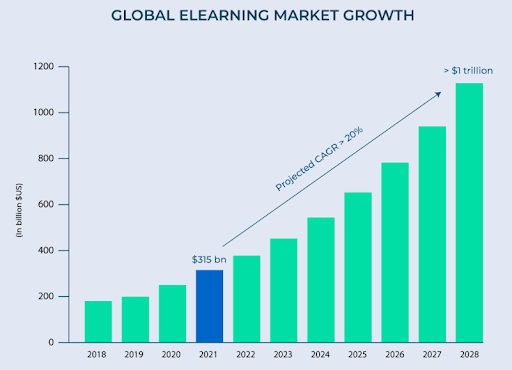
Source: 11 Exciting In-Person vs Online Learning Statistics for 2024
Author Bio

Dr. Franklin Valcin, an esteemed Instructional Designer and Professor at Atlantic International University (AIU), leads the charge in shaping the future of higher education with the significance of andragogy-driven adult education. With a keen focus on integrating advanced technologies and innovative methodologies, Dr. Valcin plays a pivotal role in crafting AIU’s dynamic academic programs. As part of AIU’s academic department, he spearheads initiatives to harness the power of Artificial Intelligence (AI) for personalized learning experiences. With the support and guidance of Dr. Valcin, Atlantic International University ensures that the unique and unrepeatable programs we offer meet the demands of today’s job market and anticipate the needs of tomorrow’s learners.




